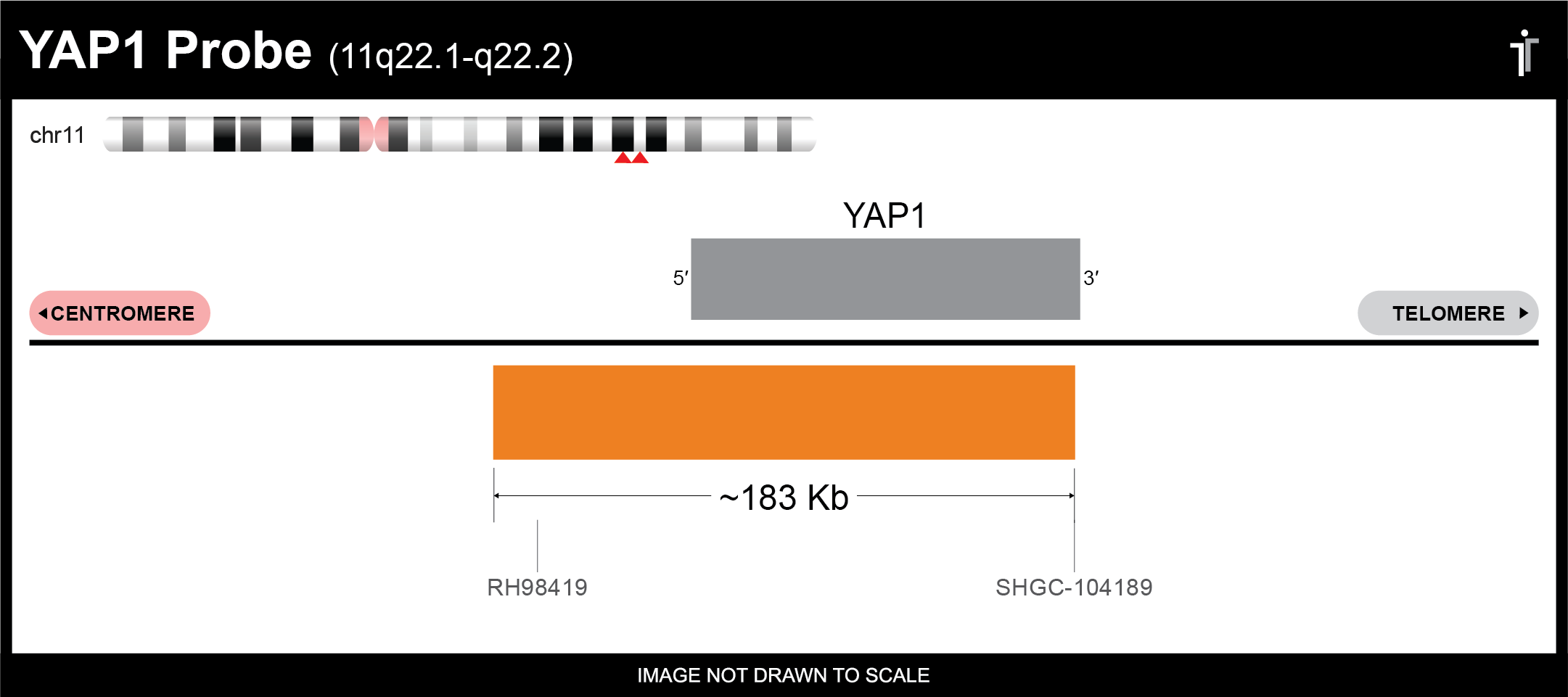YAP1 FISH Probe
Our YAP1 probe is designed to detect YAP1 amplifications and deletions. The probe comes labeled in orange, but can be customized to meet your needs.

** This product is for in vitro and research use only. This product is not intended for diagnostic use.

| SKU | Test Kits | Buffer | Dye Color | Order Now |
|---|---|---|---|---|
| YAP1-20-OR (Standard Design) | 20 (40 μL) | 200 μL |

|
|
| YAP1-20-GR | 20 (40 μL) | 200 μL |

|
|
| YAP1-20-RE | 20 (40 μL) | 200 μL |

|
|
| YAP1-20-AQ | 20 (40 μL) | 200 μL |

|
|
| YAP1-20-GO | 20 (40 μL) | 200 μL |

|
Gene Summary
This gene encodes a downstream nuclear effector of the Hippo signaling pathway which is involved in development, growth, repair, and homeostasis. This gene is known to play a role in the development and progression of multiple cancers as a transcriptional regulator of this signaling pathway and may function as a potential target for cancer treatment. Alternative splicing results in multiple transcript variants encoding different isoforms. [provided by RefSeq, Aug 2013]
Gene Details
Gene Symbol: YAP1
Gene Name: Yes Associated Protein 1
Chromosome: CHR11: 101981191-102104154
Locus: 11q22.1
FISH Probe Protocols
| Protocol, Procedure, or Form Name | Last Modified | Download |
|---|